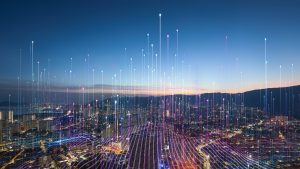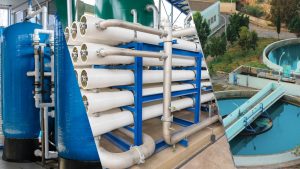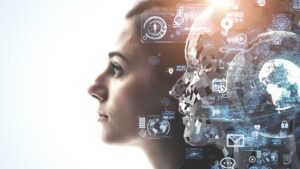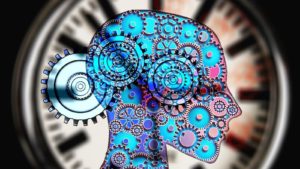There are different mechanical asset classes like air conditioning equipment, boilers, compressors, fans, hot water tanks, pumps and valves. Mechanical assets are frequently susceptible to spontaneous breakdowns, degradation, suboptimal performance and many other risks and threats. To avoid ad-lib failures in mechanical systems, mechanical asset managers require comprehensive, precise, real-time visualisation and predictive insights. This will ensure that mechanical systems like:
- Human Visual Systems (HVS),
- Industrial Pumps,
- Industrial Tunnel Fan Systems,
- Mechanical Infrastructure in Building Management Systems (BMS),
- Mechanical Ventilation with Heat Recovery Systems (MVHR),
- Underground Ventilation Systems,
- Valve Systems and other mechanical systems,
are constantly in top-notch conditions. So what is the most reliable and latest technology to serve this purpose?
Forward-thinking mechanical asset managers use digital twin technology to get informative views of the real-time and future conditions of a part of a mechanical asset, a whole asset or a system of mechanical assets. This article will help the reader understand how the digital twin platforms facilitate the managing and maintaining of mechanical assets in an innovative, responsive and cost-efficient manner.
Forward-thinking mechanical asset managers use digital twin technology to get informative views of the real-time and future conditions of a part of a mechanical asset, a whole asset or a system of mechanical assets. This article will help the reader understand how the digital twin platforms facilitate the managing and maintaining of mechanical assets in an innovative, responsive and cost-efficient manner.
Drawbacks of Traditional Sensor-based Visualisation System
Sensor technologies are used by most mechanical system managers to detect important parameters that imply mechanical system integrity.
Some of these parameters and indexes are:
Some of these parameters and indexes are:
- Asset Lifecycle
- Bearings and Lubrication
- CO2 Levels
- Maintenance Cost
- Moisture
- MTBF – Mean Time Between Failures
- MTTR – Mean Time to Repair
- OEE – Overall Equipment Effectiveness
- PPC – Planned
- Maintenance Percentage
- Productivity Percentage
- Reliability Index Schedule
- Compliance
- Temperature
- Unscheduled Downtime
- Vibration
- Work Order Closure Rate
These parameters and indexes help the managers get a clear perspective of the reliability, health and performance of all mechanical assets. Traditional sensor systems are fragmented and make asset management a copious task for managers. Asset operators would still have a lot of manual work to do during inspection, analysis and reporting. This takes a massive human effort, wastage of time and above all, many financial problems due to failure in pinpointing substandard asset performances and criticality using ‘trial-and-error’ approaches. The impending failures still remain a mystery in these maintenance approaches, which leads to prolonged system downtimes and inconvenience for the facilitators of these systems. This is why the need for better technological advancements are demanded by mechanical system utilisers in industrial and commercial spaces.
Digital Twin Technology for The Win
The digital twin offers a virtual model that is developed precisely like the mechanical system, mechanical asset or part of a mechanical asset- it can be augmented the way the user requires. Using IIoT-driven (Industrial Internet of Things-driven) sensor networks, this technology visualises preface and minute parametric changes in the virtual model. One of the main advantages of adopting this technology is that mechanical asset managers can use it remotely to access the real-time conditional, structural and performance-based statuses of all mechanical assets via a scalable and interactive model.
New Age Technological Integration
Here are the four technologies that ease the digital twin experiences of mechanical asset managers allowing them to deploy, manage, maintain, overhaul and replace mechanical assets effortlessly, time-savingly and cost-efficiently.
IIoT Sensor Systems
IIoT technologies allow mechanical asset managers to feed data and insights to digital twin models. It integrated all data sources, devices, cloud-based systems, external applications, BMS solutions, ERP solutions and other technologies to provide the data needed to be visualised by the digital twin model.
Immersive Technologies
Immersive technologies like VR (Virtual Reality), AR (Augmented Reality), and MR (Mixed Reality) can be used by the digital twin users to visualise the mechanical asset modern in a more realistic manner. They can use these technologies to interact with VR-based holograms that represent the mechanical asset to probe the internal processes and parametric changes in real-time. This gives the machine asset managers hands-on experience in inspecting, diagnosing and root cause exploring any type of mechanical asset or system. For example, if a compressor has critical vibration levels, they can use VR to tweak a 4D model of the asset and see what causes the compressor to vibrate at this rate.
AI and ML Models
All assets (even identical ones) degrade differently. The environmental changes, extreme weather conditions, usage and other external impacts cause assets to react differently at different conditions. This is why AI (Artificial Intelligence) and ML (Machine Learning) models are used by mechanical asset managers to gain insights into the future of mechanical assets.
They can be trained to analyse historical data and predict how the mechanical assets deteriorate, fail or underperform under certain conditions in the next 3 hours or 7 days (the time frame differs with the maturity of data). This technology eliminates all the limitations of age-based asset maintenance plans. Instead, it uses the data to predict the impending failures, risks and threats of assets that are deployed in disparate locations and give insights on each asset respectively. The future conditions of these assets can therefore be visualised by the digital twin allowing the managers to gain futuristic perspectives of the structure, condition, financial feasibility and performance of mechanical assets singularly.
Simulation Technology
Simulation technology is another intriguing upgrade to the application of digital twin technologies to manage mechanical assets. Simulation technology allows the mechanical asset manager to key in parameters that are related to a specific scenario and see how the digitally developed model of the mechanical asset would react. For example, the asset operator can set up weather conditions and environmental changes to fit the winter seasons and check how the tunnel fan systems of roads will perform. These event-driven insights can later be used actionably to reduce risks and ensure the safety of the road users in case of emergency, even before the asset fails.
IIoT Sensor Systems
IIoT technologies allow mechanical asset managers to feed data and insights to digital twin models. It integrated all data sources, devices, cloud-based systems, external applications, BMS solutions, ERP solutions and other technologies to provide the data needed to be visualised by the digital twin model.
Immersive Technologies
Immersive technologies like VR (Virtual Reality), AR (Augmented Reality), and MR (Mixed Reality) can be used by the digital twin users to visualise the mechanical asset modern in a more realistic manner. They can use these technologies to interact with VR-based holograms that represent the mechanical asset to probe the internal processes and parametric changes in real-time. This gives the machine asset managers hands-on experience in inspecting, diagnosing and root cause exploring any type of mechanical asset or system. For example, if a compressor has critical vibration levels, they can use VR to tweak a 4D model of the asset and see what causes the compressor to vibrate at this rate.
AI and ML Models
All assets (even identical ones) degrade differently. The environmental changes, extreme weather conditions, usage and other external impacts cause assets to react differently at different conditions. This is why AI (Artificial Intelligence) and ML (Machine Learning) models are used by mechanical asset managers to gain insights into the future of mechanical assets.
They can be trained to analyse historical data and predict how the mechanical assets deteriorate, fail or underperform under certain conditions in the next 3 hours or 7 days (the time frame differs with the maturity of data). This technology eliminates all the limitations of age-based asset maintenance plans. Instead, it uses the data to predict the impending failures, risks and threats of assets that are deployed in disparate locations and give insights on each asset respectively. The future conditions of these assets can therefore be visualised by the digital twin allowing the managers to gain futuristic perspectives of the structure, condition, financial feasibility and performance of mechanical assets singularly.
Simulation Technology
Simulation technology is another intriguing upgrade to the application of digital twin technologies to manage mechanical assets. Simulation technology allows the mechanical asset manager to key in parameters that are related to a specific scenario and see how the digitally developed model of the mechanical asset would react. For example, the asset operator can set up weather conditions and environmental changes to fit the winter seasons and check how the tunnel fan systems of roads will perform. These event-driven insights can later be used actionably to reduce risks and ensure the safety of the road users in case of emergency, even before the asset fails.
Tigernix- The Best Digital Twin enabler for Mechanical Asset Managers
Tigernix offers the best digital twin technologies and trained AI models for mechanical asset utilisers and operators in Australia. We specialise in meeting the unique visualisation requirements of mechanical asset managers by developing scalable and interactive models to help gain real-time visibility, predictive insights and event-driven aspects of mechanical assets accurately.
Virtual Mechanical Twins Are A Thing of The Future
Prolonging mechanical asset lifetime with minimal maintenance intervention can only be done with a smart and integrated digital twin system. This solution meets all stakeholder requirements starting from managing mechanical assets fact-based maintenance scheduling to predicting budgets for maintenance costs. With the smart employing of an optimised digital twin, you can gain the benefits of:
- Employing a reliable maintenance team that responds promptly and reacts only when needed
- Have a fantastic tracking and tracing technology
- Have comprehensive and reliable metrics to measure real-time and future performance of the mechanical assets
- Meet all asset regulations, policies, standards and codes
- Tailor fact-based reliability maintenance programs and more.
The digital twin technology is by far the most unchallenged visualisation technology for all mechanical asset-based institutions. It is simply the future of visualisation being used in the present.







